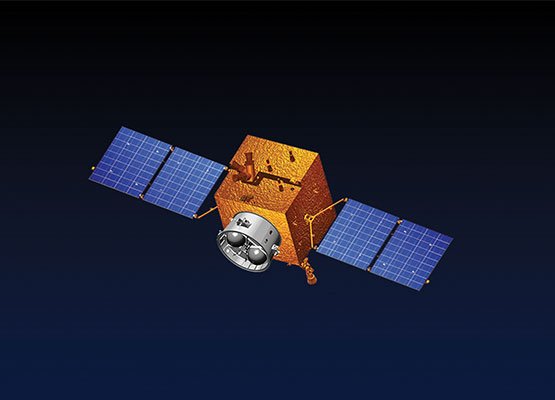Pakistan’s iCube-Qamar, the country’s debut lunar satellite, has successfully completed three lunar orbits and transmitted the first images from orbit, according to the Space and Upper Atmosphere Research Commission (Suparco). The cube satellite (CubeSat) was launched aboard China’s Chang’e-6 spacecraft from Hainan and delivered data to Pakistan in Beijing, deepening lunar exploration cooperation between the two countries. CubeSats are small satellites used by academic institutes for experimental and research purposes in low earth orbits, but they are now finding many applications in higher orbits and deep space missions.
On Friday, the Pakistan Institute of Space Technology released the first images taken by the satellite and delivered by Zhang Kejian, head of the China National Space Administration (CNSA), to Pakistani Ambassador Khalil Hashmi at a ceremony in Beijing. CNSA Chief Engineer Li Guoping presided over the ceremony, which was attended by representatives from various organizations, including the Department of International Cooperation of CNSA, Lunar Exploration and Space Engineering Centre, National Astronomical Observatories of Chinese Academy of Sciences, Shanghai Jiaotong University, Suparco, and Asia-Pacific Space Cooperation Organization (APSCO).
The opportunity to release a CubeSat in lunar orbit from Chang’e-6 was offered by the CNSA through the APSCO to its member states. After a thorough evaluation, Pakistan’s proposal was accepted out of all APSCO member states. The iCube-Q was developed by faculty members and students of the Pakistan Institute of Space Technology in collaboration with China’s Shanghai Jiao Tong University and support from Suparco. The satellite carried two cameras as payload for imaging lunar surface and earth/moon images from orbit, besides having 3-axis altitude control for desired orientation, onboard computer, thermal control, telemetry and telecommand, and payload data communication modules for connecting through deep space network. The Chang’e-6 rocket took five earth days to reach moon orbit. iCube-Q was deployed on May 08 in a carefully selected 12-hour elliptical orbit that allowed imaging of the desired lunar surfaces.















